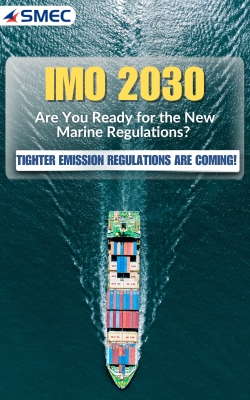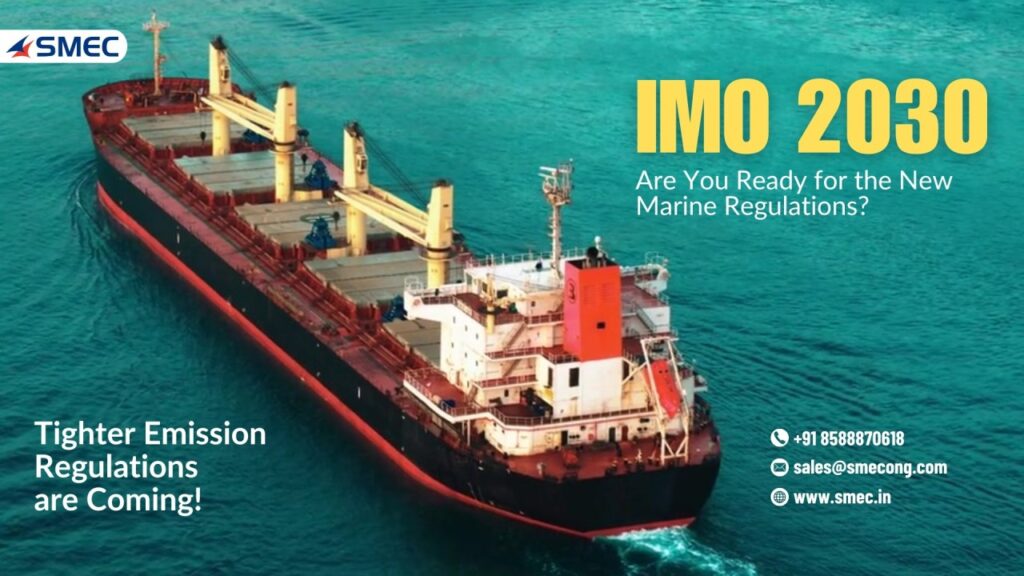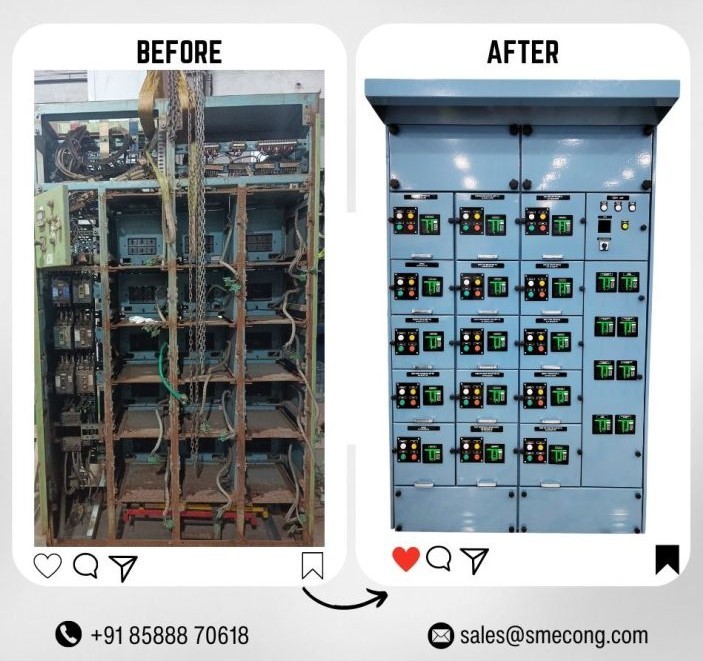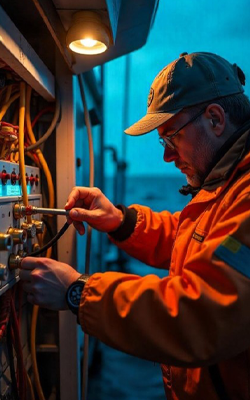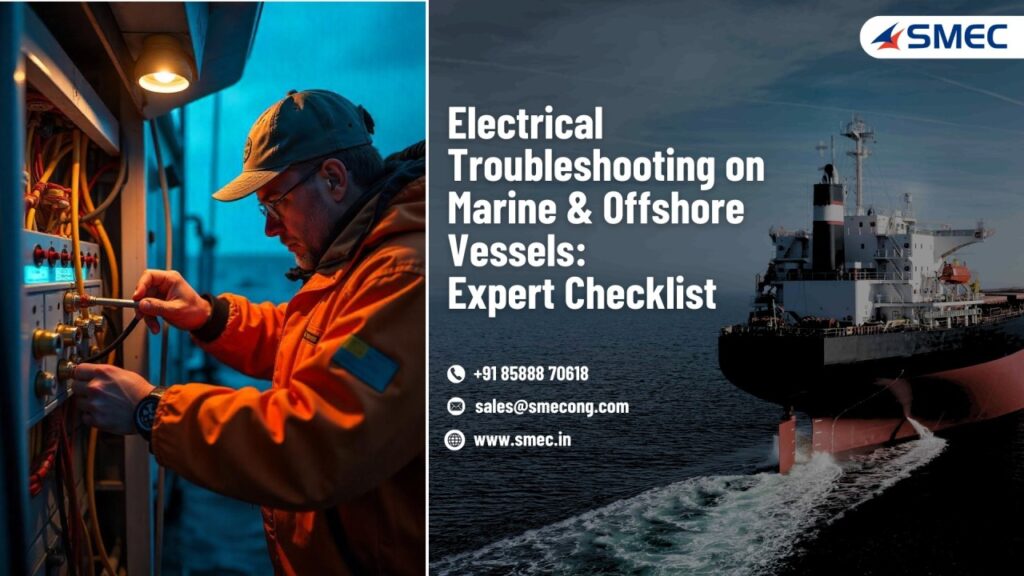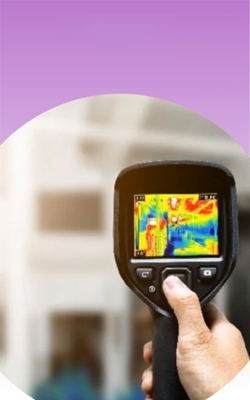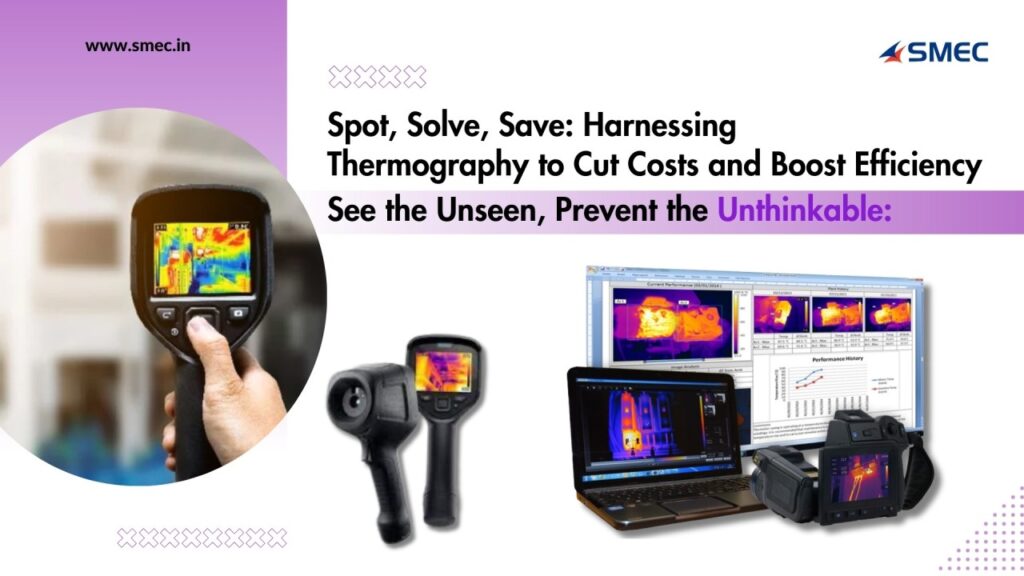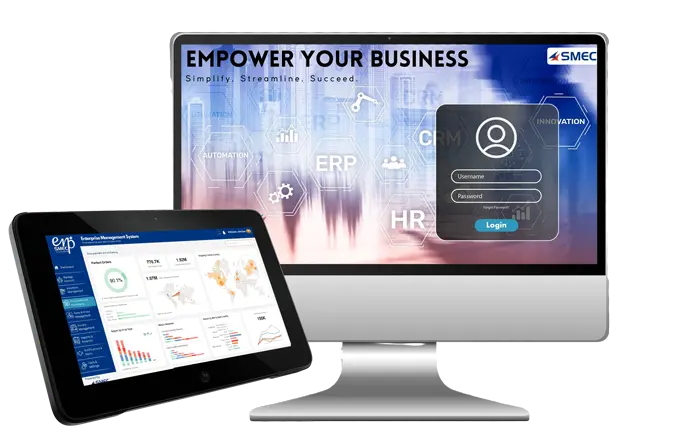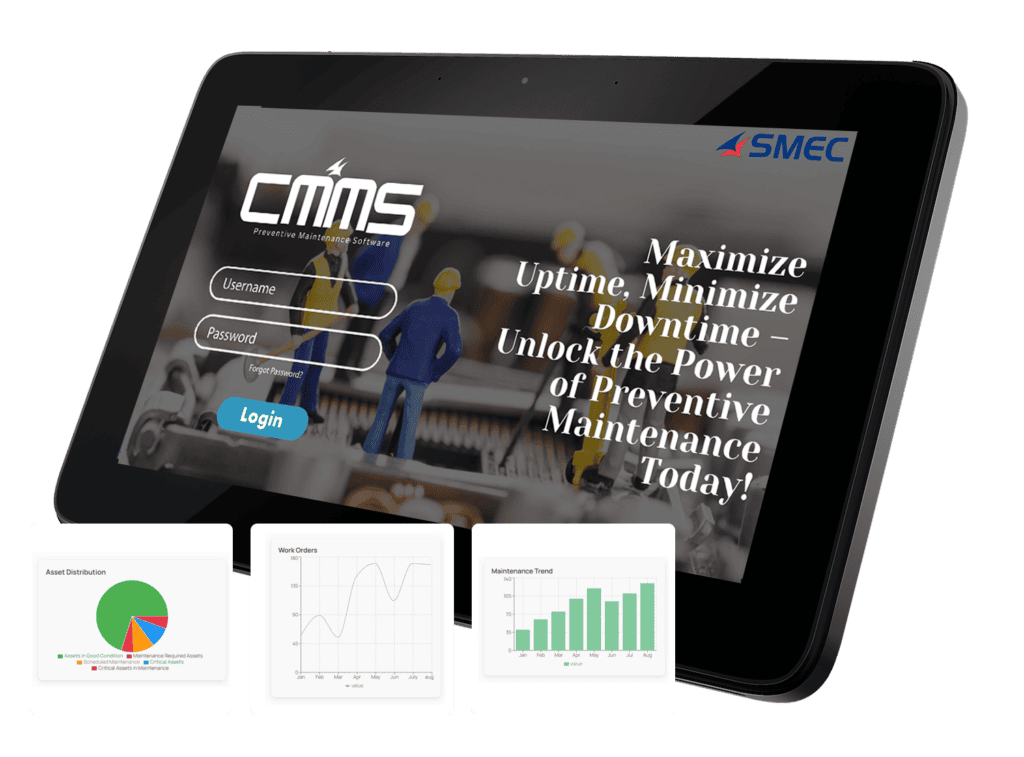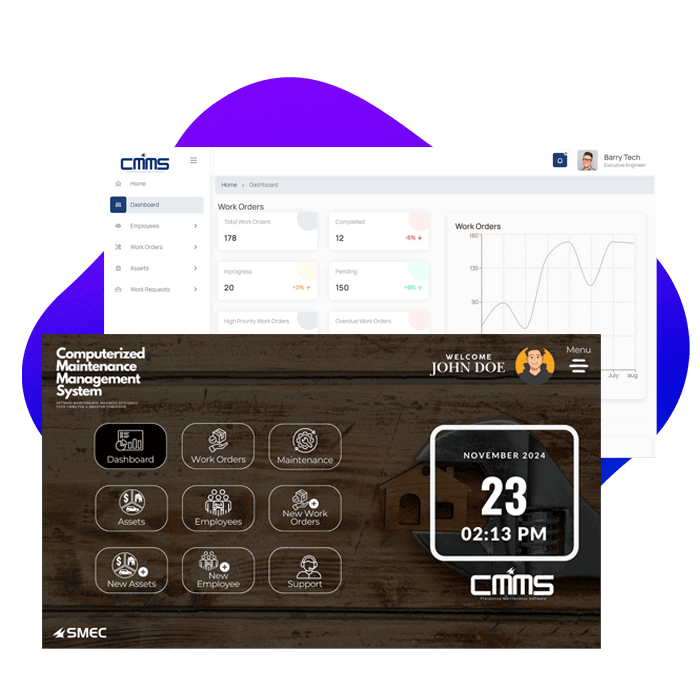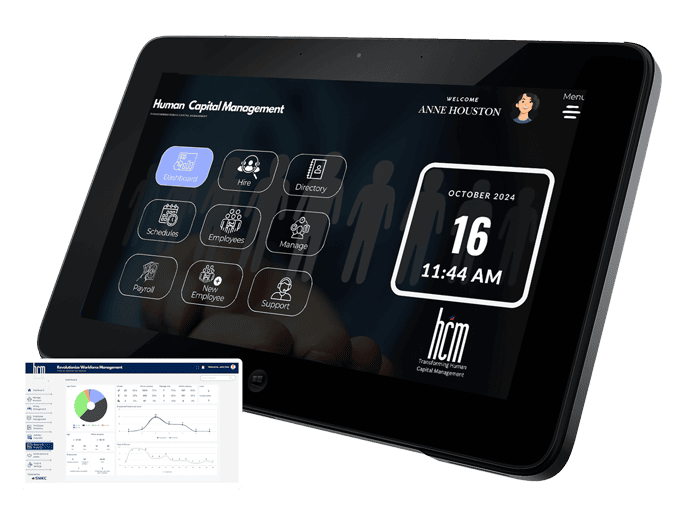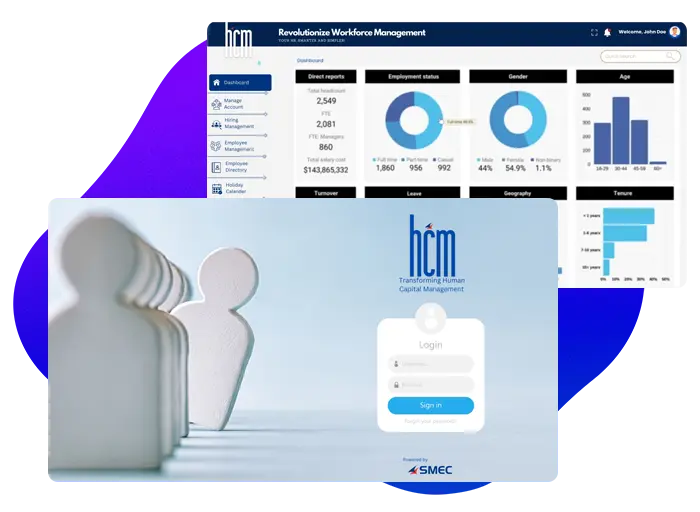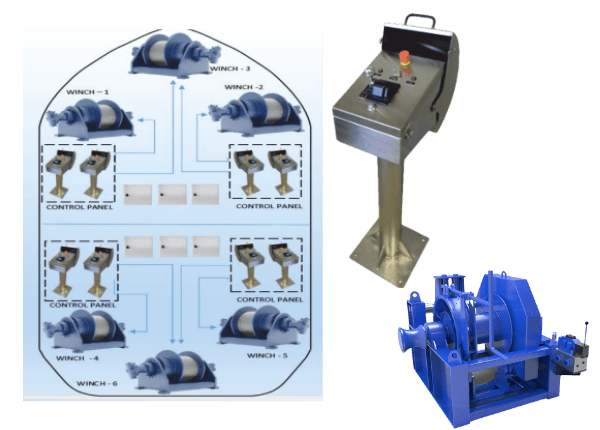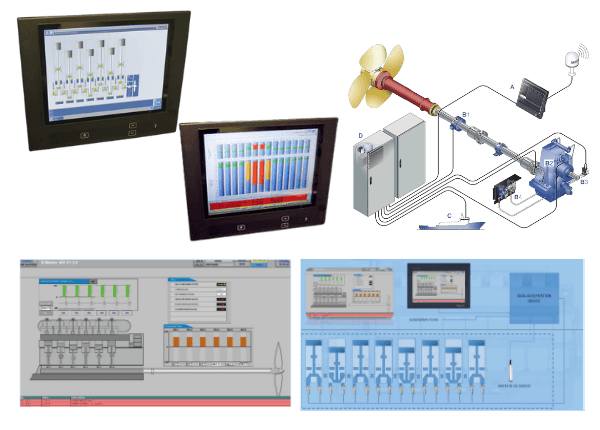
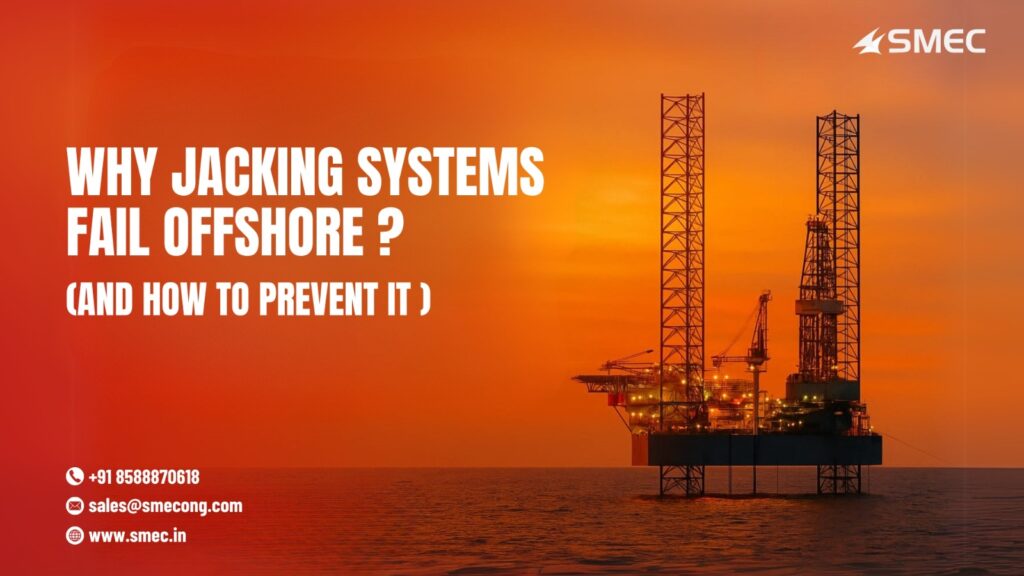
Common Causes Of Offshore Jacking System Failures
Predictive Maintenance Solutions With SMEC Automation
Failures Aren’t Sudden — They’re Silent. Here’s How to Stop Them!
In offshore , jacking systems are the backbone of rig mobility and stability. When they fail, the consequences can be catastrophic – delayed operations, million-dollar losses, or worse, structural damage that threatens the entire rig.
As offshore assets age and operational demands intensifies in the coming years, understanding why jacking systems fail offshore — and how to prevent it — is no longer optional. It’s mission-critical.
1. Mechanical Fatigue and Wear
Jacking systems endure thousands of lifting, lowering, and station-keeping cycles. Over time, mechanical stress leads to:
- Pinion and rack wear
- Rack misalignments
- Loosening of structural bolts
Unchecked, these degradations snowball into major failures, often under peak load conditions.
2. Hydraulic System Failures
Hydraulic cylinders are the heart of lifting operations. Common issues include:
- Internal seal wear and scoring
- Hydraulic fluid contamination
- Loss of hydraulic pressure
Pressure loss can mean sudden loss of lifting control — a critical risk during heavy seas.
3. Electrical and Automation Faults
Modern jacking systems rely on PLC-controlled motors and sensors. Without preventive maintenance, electrical failures emerge:
- Motor winding breakdowns
- Limit switch malfunctions
- PLC relay faults
One unnoticed fault can halt rig operations instantly.
4. Corrosion and Environmental Damage
Offshore environments are brutal:
- Saltwater corrosion thins jacking legs
- Structural degradation weakens safety margins
- Rack and pinion systems deteriorate faster than expected
Without proactive anti-corrosion strategies, hidden structural risks accumulate.
5. Lack of Preventive Inspection and Maintenance
Visual inspections miss up to 70% of developing faults (Source: Offshore Maintenance Journal, 2024). Without structured condition monitoring, failure often strikes without warning.
How to Prevent Offshore Jacking System Failures
1. Implement Regular Condition Monitoring
Leverage:
- Vibration analysis
- Thermal imaging
- Oil sampling diagnostics
Bonus: Real-time remote monitoring solutions like SMEC’s NexWave detect early faults long before traditional inspections would.
2. Perform Hydraulic System Audits
- Inspect seals, cylinders, filters, and fluid quality regularly
- Track internal leakage or pressure loss proactively
Hydraulic health = Lifting safety.
3. Maintain Electrical and Automation Systems
- Check motor currents and insulation resistance
- Test relay response times.
- Update PLC firmware and secure systems against cyber threats
4. Strengthen Corrosion Protection Programs
- Annual coating inspections and reapplications
- Offshore-grade anti-corrosion treatment
- Scheduled upgrades of cathodic protection systems
5. Partner with Expert AMC Providers
Securing an Annual Maintenance Contract (AMC) with specialized service providers ensures:
- Predictable service schedules
- Proactive fault detection
- Lifecycle cost reductions
- Greater operational peace of mind
SMEC Automation delivers customized AMC programs for jacking systems, trusted by global offshore operators.
Real-World Success Story: Saving a Middle East Jack-Up Rig
In 2024, SMEC Automation was called to assist a Middle East jack-up facing critical jacking delays. Our predictive maintenance approach detected hidden pinion wear — invisible to standard inspections.
Outcome:
- Emergency retrofit avoided
- 7 days of downtime saved
- Over $700,000 in operational cost savings
The Bottom Line: Predict, Protect, Perform
Jacking system failures are not inevitable — they are preventable.
Operators who invest in predictive strategies, disciplined maintenance, and expert partnerships today are the ones who will secure their offshore assets, safety, and profitability well into the next decade.
Start Securing Your Jacking Systems with SMEC! [ SMEC Automation ]
📩 Contact us: sales@smecong.com | 🌐 Visit: www.smecoilandgas.com | 📞 +91 85888 70618
Happy Reading!
#OffshoreMaintenance #JackingSystems #MarineEngineering #PredictiveMaintenance #AssetIntegrity #OilAndGasIndustry #FleetReliability #SMECAutomation
ADDRESS: 2nd FLOOR KALOOR COMPLEX,COCHIN
PHONE NUMBER: +91 70453 55414
EMAIL: support@smec.in
WEBSITE: www.smec.in



